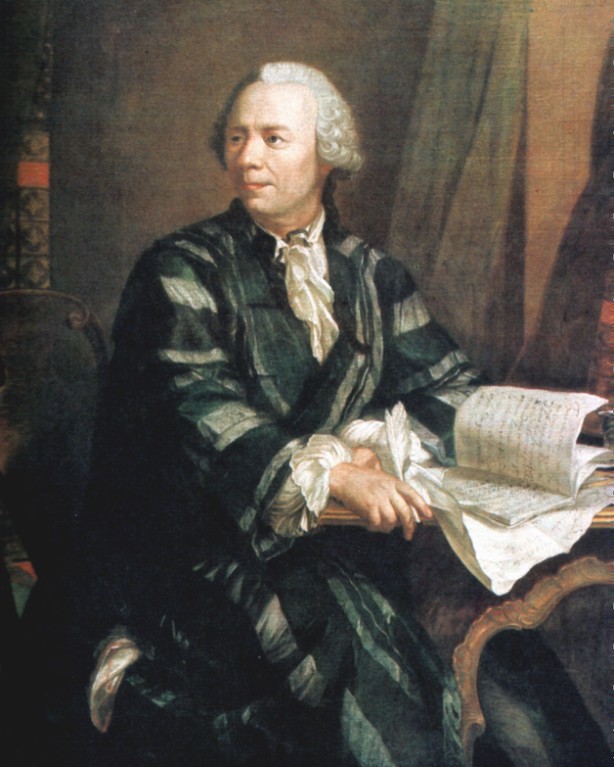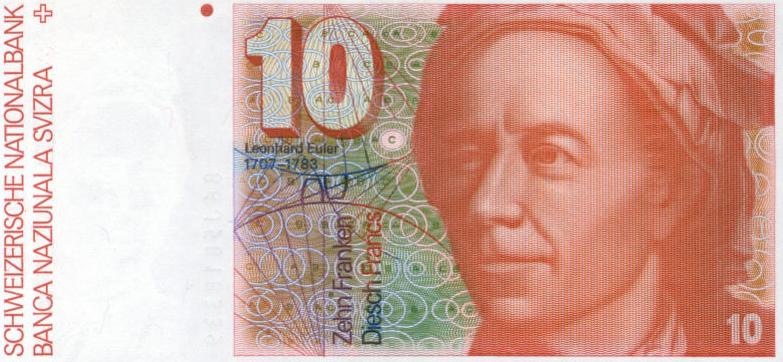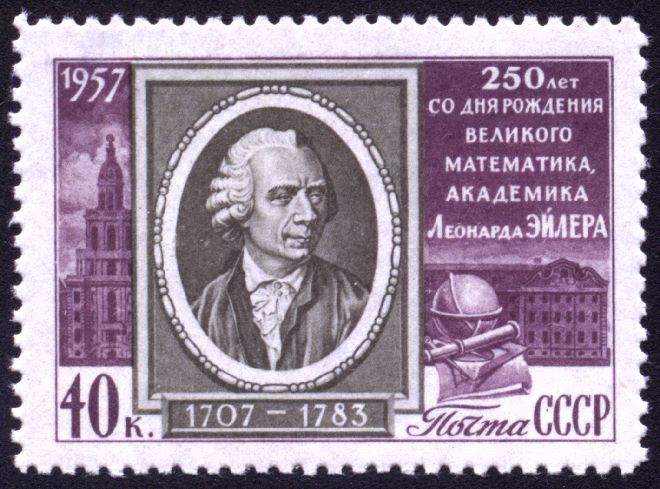Background:
Euler was born in Basel Switzerland on 15th April 1707 to Paul Euler, a minister of the Protestant Evangelical Reformed Church, and Marguerite Brucker, a minister’s daughter. After an early education at home he moved to the city to attend and old-fashioned school where mathematics was not taught. In 1720, aged 13, he moved to the faulty of Philosophy at the university and graduated in 1722. The following year he transferred to the faculty of Theology as his father had wished but this is when he started to study mathematics seriously.
He began acquainted with a famous professor, Johann Bernoulli, who gave him valuable advice to start reading more difficult mathematical books. If he came across an obstacle or difficulty he would visit the professor who would provide an explanation for everything he could not understand.
Euler received his master’s degree in 1724, aged 17. With support of Johann Bernoulli, Euler applied for a professorship of physics at the University of Basel but it was turned down.
During his time in Russia, Euler wrote many elementary and advanced maths textbooks for use in Russian schooling, solved many practical problems and wrote 90 works for publication including papers on Newtonian Dynamics, and the famous Konigsberg bridge problem in 1736 creating a whole new branch of mathematics known today as Graph Theory.
Euler moved from Russia to the Prussian Royal Academy by invitation of Frederick the Great. He settled down in Charlottenburg where he finished his masterpiece on the Calculus of Variations. Published in 1744 it led to his election to the Royal Society of London and to its Paris Academy.
On 18th September 1783, Euler suffered a stroke and died aged 76. Earlier that day he had worked on calculations involving the ascent of balloons, discussed the orbit of the newly discovered planet Uranus and held a maths lesson for one of his grandchildren.
Achievements:
In the history of mathematics, no one mathematician has published as much as Euler. In total he wrote nearly 900 papers, enhancing our knowledge of mathematics and creating completely new fields.
In Applied Mathematics he created Analytical Mechanics and his contributions in Pure Mathematics include:
- Calculus
- Differential Equations
- Analytic and Differential Geometry of Curves and Surfaces
- Number Theory
- Infinite Series
- The Calculus of Variations
In Mathematical Physics:
- Discovered the fundamental differential equations for the motion of an ideal fluid
- He regarded heat as the oscillation of molecules
- He favoured the wave instead of the particle theory of light
- Studied the propagation of sound and obtained results for the refraction and dispersion of light
- Investigated the beaming of beams and columns
- Calculated the perturbative effect of celestial bodies on planet orbits
- Calculated paths of projectiles in resistive media
- His work on optical instruments lead to the design of telescopes and microscopes
- Work of the design of ships improved navigation
- Produced a theory of the tides
Portrait by Johann Georg Brucker
Swiss 10 Franc banknote honouring Euler
A 1957 stamp of the former Soviet Union commemorating the 250th birthday of Euler



